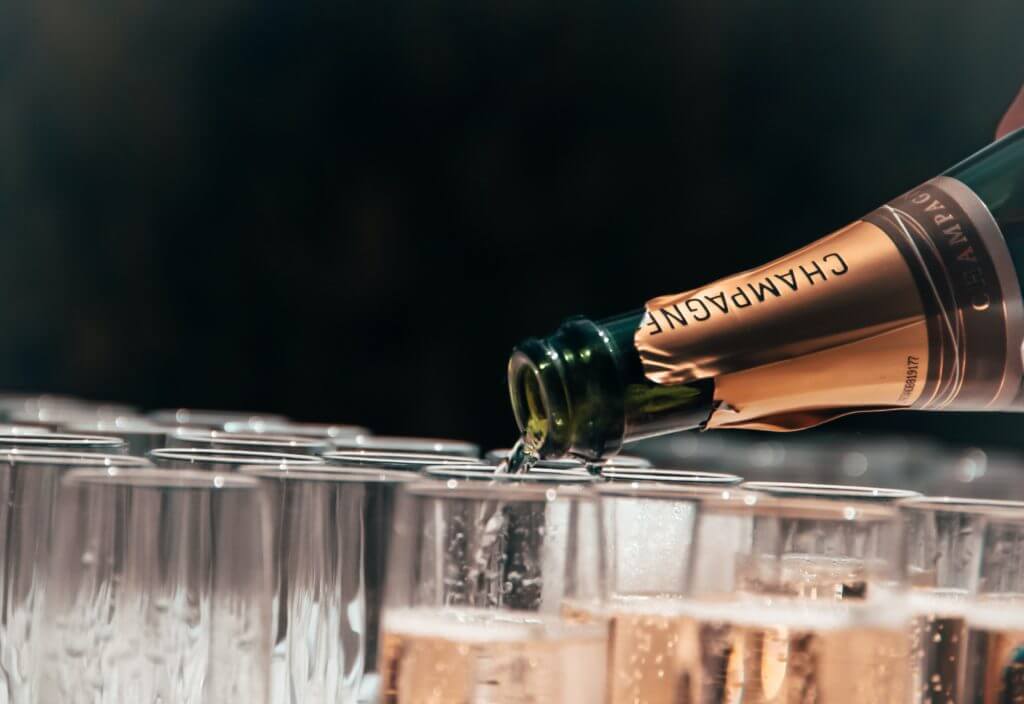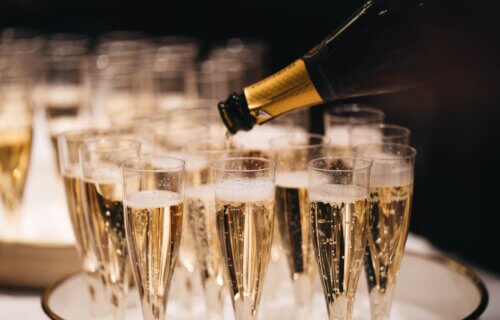PROVIDENCE, R.I. — The rising bubbles are arguably the best part of celebrating with champagne! Who doesn’t like watching them fly up the glass in a straight line? Speaking of, why do the bubbles fizz up in a straight line while the ones in beer or soda don’t? Fluid mechanics researchers from Brown University and the University of Toulouse say they’ve finally cracked that effervescent code!
“This is the type of research that I’ve been working out for years,” says Roberto Zenit, a Brown engineering professor and senior author of the study. “Most people have never seen an ocean seep or an aeration tank but most of them have had a soda, a beer or a glass of Champagne. By talking about Champagne and beer, our master plan is to make people understand that fluid mechanics is important in their daily lives.”
When the hallmark bubbles continuously rise to the top in a single-file line, it’s referred to as a stable bubble chain. Other carbonated drinks contain unstable chains, where the bubbles move less uniformly and go off to the side, making it look like a bunch of bubbles are rising at the same time.
To explore these patterns, the team poured glasses of Pellegrino sparkling water, Tecate beer, Charles de Cazanove champagne, and a Spanish-style brut. They then filled a small rectangular plexiglass with liquid and inserted a needle at the bottom to pump gas in order to generate bubble chains and study the stability mechanism.
They found that surfactants, which are soap-like compounds, were key to keeping the bubbles in line. These molecules lower surface tension between the liquid and gas. They also found that bubble size is an important factor. Chains with larger bubbles will generally produce a smoother rise.

“The theory is that in Champagne these contaminants that act as surfactants are the good stuff,” explains Zenit in a university release. “These protein molecules that give flavor and uniqueness to the liquid are what makes the bubbles chains they produce stable.”
Based on their study, the team explains that in order to recreate the champagne effect, you have to either add more surfactants or make the bubbles bigger. This study isn’t just cool champagne science however, as it has the potential to greatly influence the world of fluid mechanics, deepening the understanding of cluster formation in bubbly flows. For instance, in nature, understanding these flows could help scientists analyze the ocean seeps that allow carbon dioxide and methane to come up from the bottom of the ocean.
“We’re interested in how these bubbles move and their relationship to industrial applications and in nature,” Zenit concludes.
The findings are published in the journal Physical Review Fluids.
You might also be interested in:
- Best Champagne For 2023 Celebrations
- Best Hard Seltzers: Top 5 Fizzy Drinks Most Recommended By Experts
- Opening a champagne bottle creates ‘supersonic shock waves’
- Perfect pairs: Why do food combos like oysters and champagne taste so good together?

